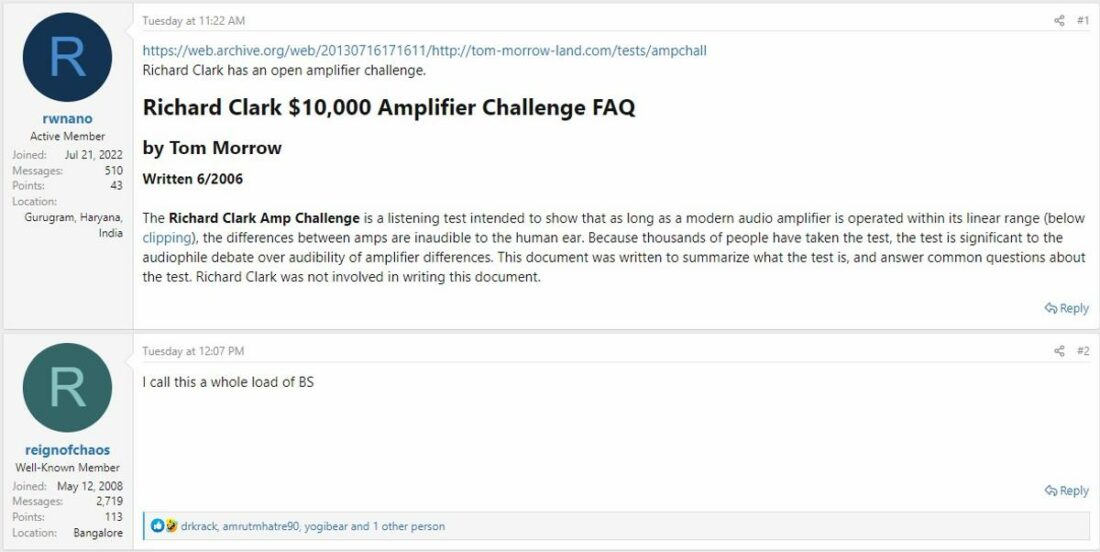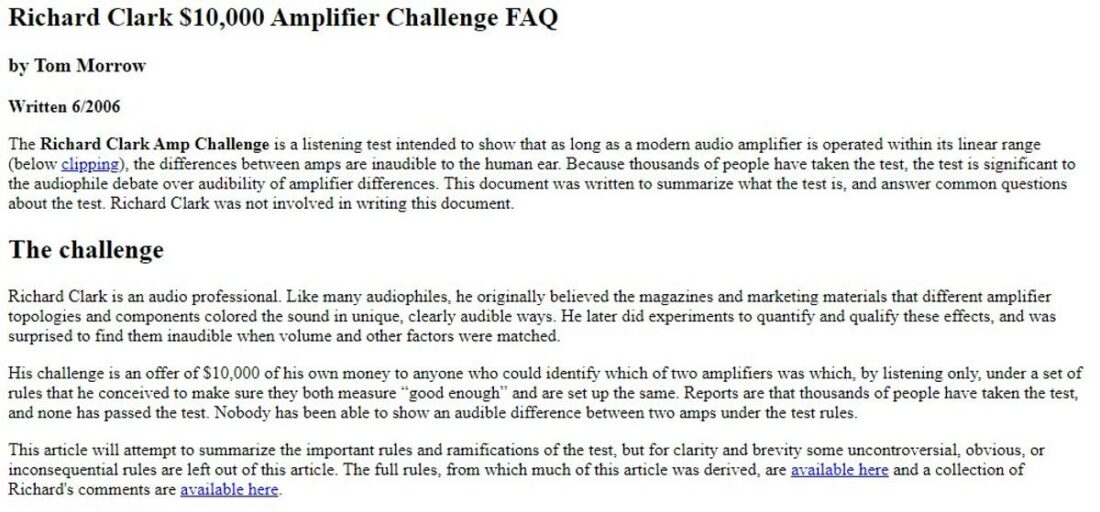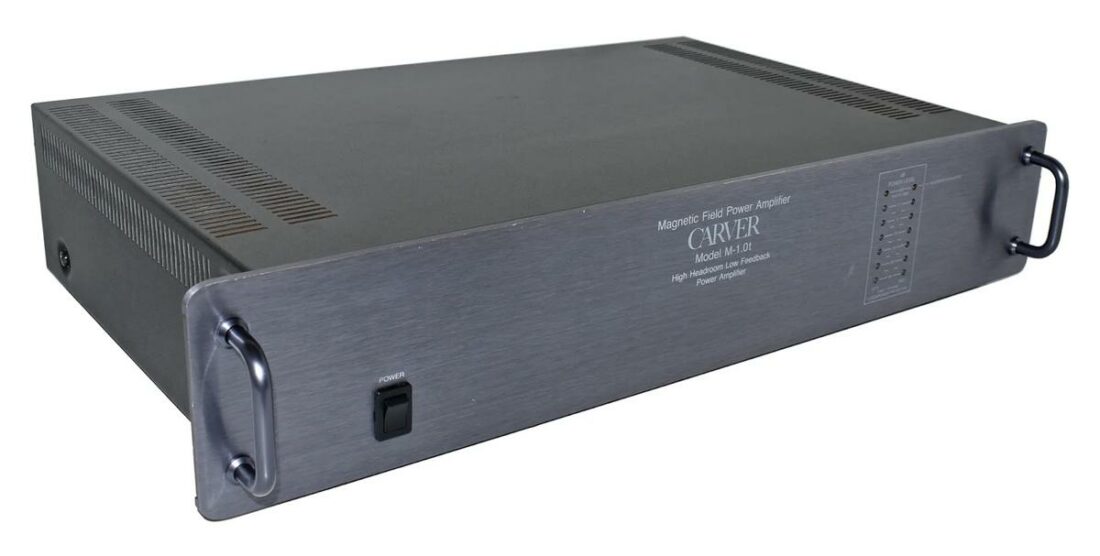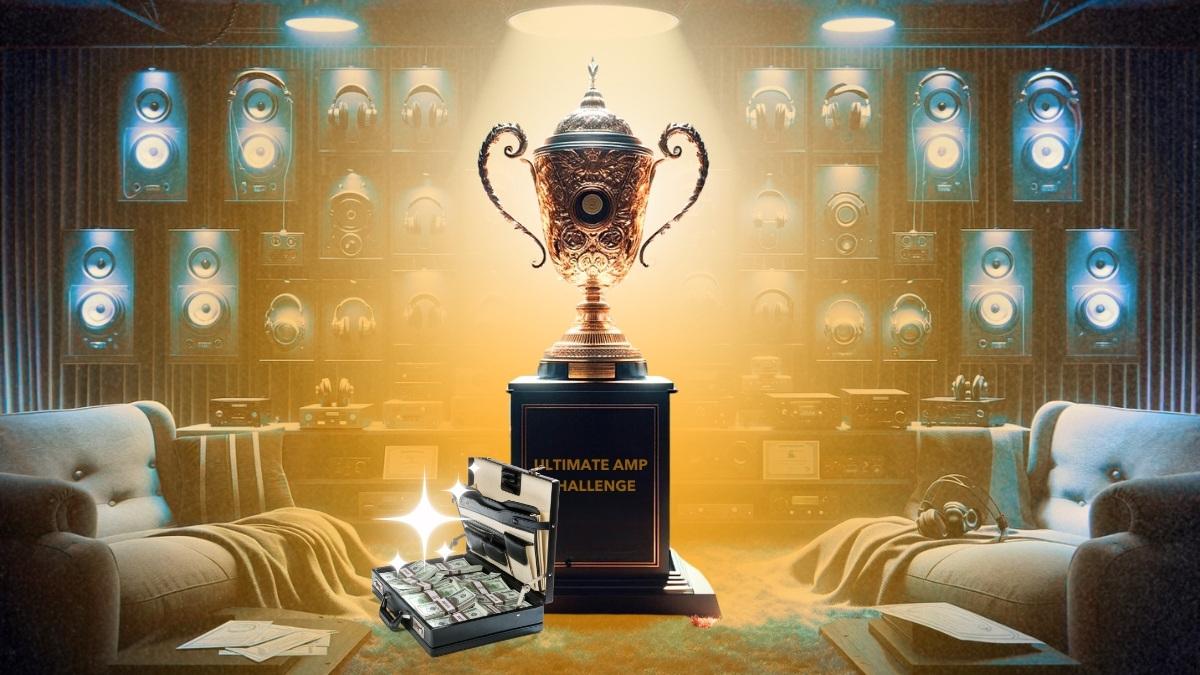Care to win 10 Grand?
For years, audiophiles have debated whether or not amps actually change the sound quality of headphones beyond just boosting the volume. Because of this, an audio amplifier testing challenge was born.
According to a now-archived webpage, the challenge was active since the early nineties up until 2006. It would pit two amps against each other, and the listener would attempt to discern between the two in a blind test. If they can, there was a $10,000 cash prize for the taking.
The creator of the challenge, Richard Clark claims that in around 6 years, a “couple of thousand people” have taken the challenge, and none have managed to take home the prize.
The catch in the rules of the challenge is that both amps have to be operated within their rated power, and neither should have apparent issues like noise or DC offset.

Some people have criticized Clark’s challenge, so let’s sift through what little info is there left about it, why it’s so hard to beat, and what the implications are for amplifiers we use for our headphones.
You Can Get $10K, But There’s a Catch!
In the rules section, Clark notes that both amplifiers should be operated in their linear power band, which is set by the weaker amp. Therefore, when comparing a 10W and a 100W amp, both ought to be limited to 10W. That way, no clipping can occur.

Also, tube amps are out of the question because of their quirks like frequency response limitations and high output impedance.
So what’s allowed then? Any solid-state amp that falls within the guidelines.
Initially, the challenge was limited to car audio amps, but later home audio amplifiers were welcome as well. Still, not one of the listeners could reliably discern between two amps.

Then there’s a stringent testing procedure to ensure statistical significance:
The testing uses an ABX test device where the listener can switch between hearing amplifier A, amplifier B, and a randomly generated amplifier X which is either A or B. The listener’s job is to decide whether source X sounds like A or B.
The listener inputs their guess into a computerized scoring system, and they go on to the next identification. Then, they can control the volume, within the linear (non-clipped) range of the amps.
The listener has full control over the CD player as well. And, the listener can take as long as they want to switch back and forth between A, B, and X at will.
To take home the prize money, you’d have to make the right guess 12 times in a row. And you’d have to do it twice!
Was the Game Rigged?
Was there any chance someone could’ve gotten it right enough times?
As an audio reviewer, I’d say the best shot would’ve been to bring an unusually bad amp that sort of passes the initial smell test but then falls apart. The problem is that even at that time, most solid-state amps outside of high-end and high-power stuff were pretty similar.
The usual stereo amp would be a Class-AB with a power range from 50-120W to 8 ohms. For most domestic settings and speakers, that kind of power is enough to throw a party, and the amp won’t be too expensive or big. And most of them would use very similar circuits to get the job done.
Another Amp Challenge
An interesting counterfactual to Clark’s amplifier challenge was actually performed by a famous amplifier designer Bob Carver. Enter The Carver challenge!

Carver claimed that he could make his own Model 1 amplifier sound indistinguishable from any high-end amp by analyzing the other device and tweaking his own. The audio reviewers at Stereophile picked up the gauntlet and let Carver do his magic.
After two days of tinkering, Carver was able to tweak his 700$ amp so that it was indistinguishable from the reference – a highly lauded almost-3000$ (per channel) Conrad-Johnson Premier Four tube amp. Needless to say, the Stereophile reviewers were astonished by the result and even voiced some “Disquieting Implications” of the findings.
What Now?
With Clark’s challenge long dead, can we, the amp connoisseurs, sleep peacefully knowing that we’re not blowing money on glorified effects boxes? Maybe the curve appreciation gang is right, and an Apple Dongle is all you need.
The problem is that there’s very little in terms of audibility threshold or even listener preference testing for electronics. How much THD can we take before our ears roll up in disgust? Does it matter if our speakers and headphones have magnitudes more distortion than even very modest amps?
Ultimately our ears are a good test. Of course, they always consult our eyes, so a blind test is preferable, if possible. Check out our headphone amp reviews if all this reading made you power-hungry!
